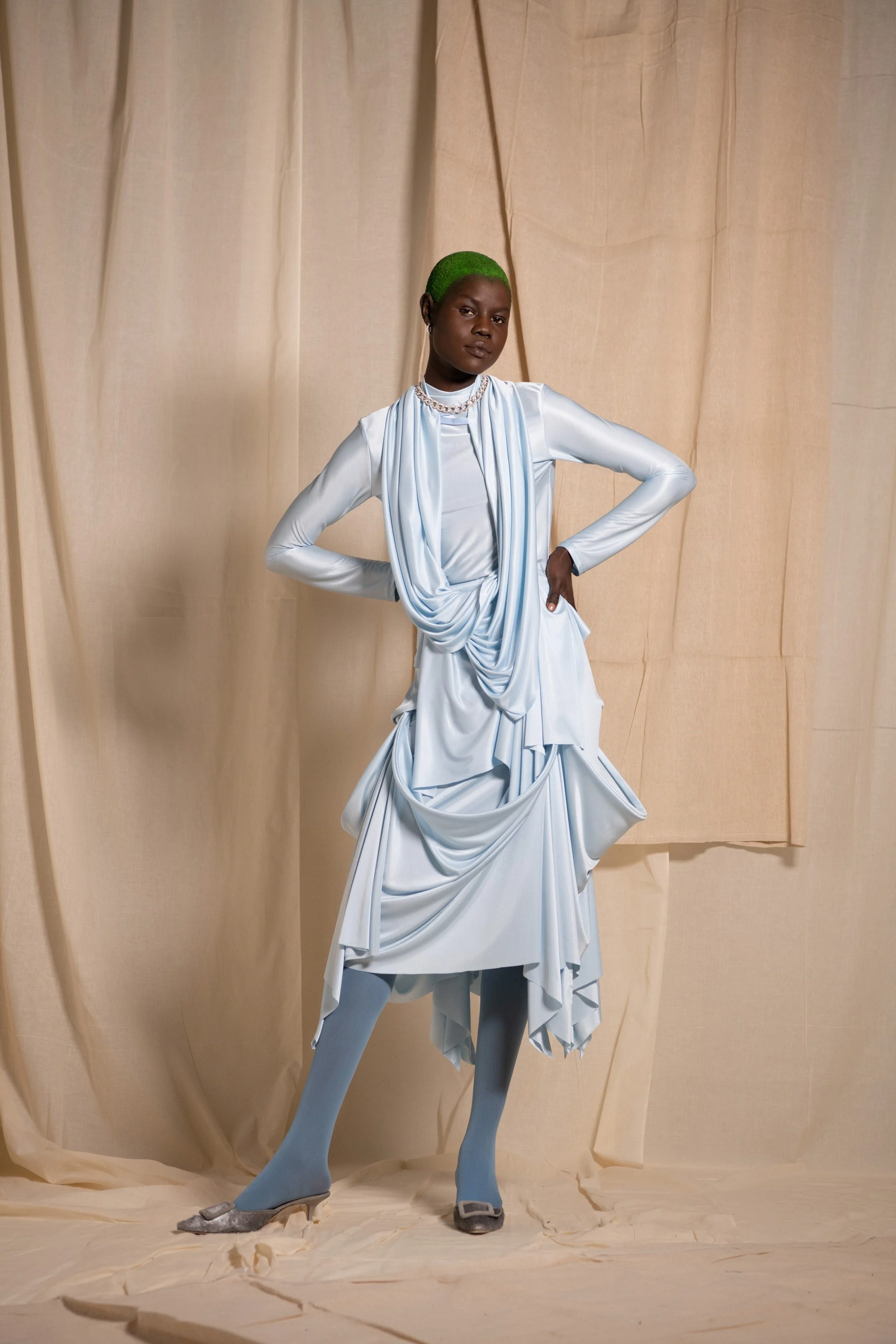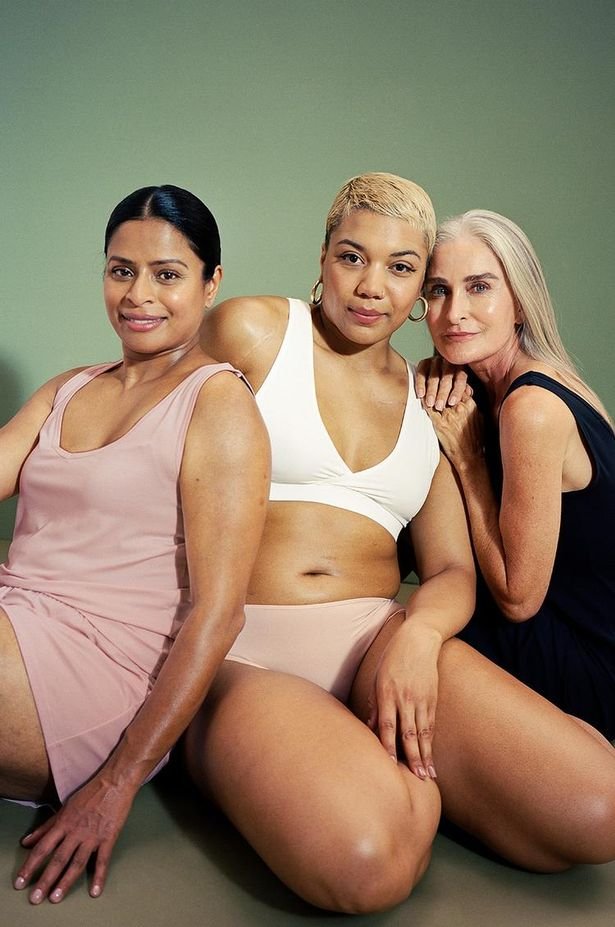Richard Malone: Maker on a Mission
5 minute read
Are the runways of fashion week as irrelevant to women in midlife as aeroplane runways were to everybody during the Covid crisis? One designer who believes passionately that this shouldn’t be the case is Wexford native and international success story Richard Malone.
Since beginning his fashion career at Central Saint Martins in London a decade ago, Malone has railed against the homogenisation of women in fashion. When I first interviewed the millennial in 2018, he explained to me: “We’ve gone through this weird phase where every woman [on the runway] looks 16 and skinny. That can’t be the only way to look.” Certainly, his own twice-yearly catwalks at London Fashion Week have consistently showcased a diversity of ages, ethnicities and body shapes; something he shrugs off as neither radical nor exceptional, putting it down to good business sense as much as anything. “Private clients aren’t buying from luxury houses now because they can’t imagine themselves wearing those clothes. The houses grade up the fits, but then they don’t sit correctly on other women.”
Inspired by his artistic grandmother and hard-working mother – Malone describes himself as having grown up in a “very protective female environment” – he speaks effusively and earnestly about creating clothes for the kinds of women he was surrounded by as a boy in Ardcavan; women of every age, shape and size.
And while you might not look at a Richard Malone collection and think instantly that it’s for you – his signature is sculptural silhouettes and his celebrity clients include the unconventional Tilda Swinton and Róisín Murphy – Malone is a designer who refuses to sell any woman short on drama or modernity, regardless of the decade or body type she inhabits. He believes women in midlife and beyond are as deserving of, and as capable of wearing, high fashion as any Gen Z-er.
A look from Richard Malone’s AW22 collection.
This summer, Malone is occupying a residency at the National Gallery of Ireland (he describes it as a “dedicated making period”) where he will create a body of work – anything from ceramics and sculpture to textiles and clothing – in response to the Gallery’s first exhibition of Swiss sculptor Alberto Giacometti’s paintings, sketches, prints and sculptures, currently on view in the Beit Wing until September 4. The results of Malone’s efforts will be exhibited in August, but in the meantime visitors can see him at work in his studio, and attend workshops and talks with a variety of community groups.
If you’re any sort of culture vulture, this kind of immersive artistic offering will have huge appeal, and if you love fashion, it’s an obvious must-see, but whether it immediately sounds like your bag or not, it’s worth checking out because Malone is an intriguing character who has never played to type. He was the working-class ingenue in a college filled with upper-middle-class, private school, fashion-savvy undergrads; he adopted a circular fashion model for his brand long before it had any ‘optical’ value; and everything he designs is developed by being tried on the body, initially his own and then on a variety of different sized women to see exactly how the fit and form works.
Richard Malone with three Giacometti sculptures. Photos by Naoise Culhane.
Malone’s focus on form and his penchant for manipulating fabric into sculptural pieces mirrors Giacometti’s obsession with shape and structure, and this was one obvious reason why Sinead Kathy, head of education at the National Gallery, considered the residency a strong fit for Malone. But it’s the overlap in importance of community and family to both artists that especially interested the now London-based designer. Giacommeti preferred to work with models he was close to – his sister, wife and younger brother were his main subjects – while many of Malone’s designs were inspired by his mother’s Argos uniform and his father’s overalls (he worked on construction sites) as well as the local school uniforms he and his friends wore. “I learned a lot from my parents’ clothes as a child in terms of functionality and resourcefulness,” he explains.
Malone feels deeply connected to his heritage, and his experiences growing up on the edge of a small town in Co Wexford defined the fashion narrative that he has continued to explore and evolve so beautifully.
“Growing up in a working class town, I didn’t have access to fine art, galleries, contemporary art or high fashion,” he explains. “I discovered fashion on MTV and in tabloid newspapers.”
There’s a fascinating dichotomy between the once working-class fashion outsider and the now peer-respected resident of a mainstream cultural institution. It’s something Malone is aware of. “I feel lucky that I’m able to create conversations and make spaces for people from any background or gender or sexual orientation,” he tells me. Malone is passionate about inclusivity, and he’s especially interested in the gallery’s outreach programmes for young people with autism and special needs run by the education department. “It’s amazing to have all of these different conversations going on,” says Malone. “We need to show that difference can be your strong point.”
The 32-year-old has always had an interest in, and a relationship with, ‘otherness’. On the back of his AW22 runway show, Malone told Vogue.com: “I kind of identify with all of the characters who buy my clothes. There’s a sort of outsiderness.” I think many women in midlife feel this sense of otherness, of not being the right ‘fit’ – literally and figuratively – for high fashion. Growing up in a protective female environment has created a kind of shielding spirit within Malone towards these women, so I’m not surprised when he reveals that a large proportion of his clients are women in their middle years and beyond who value the designer’s meticulous tailoring, and his appreciation of the female form in all its guises.
Despite his subdued, lullaby tone of voice, Malone speaks fiercely about how female consumers are treated. “It’s outrageous how women are sold ideas and ‘things’ that would never be marketed to men,” he says. “The assumption is that their priorities are spending and shopping, but what I’m seeing is a real respect for craft and making. Buying fewer and better is something that comes with age and confidence,” he says. “Trends don’t ground a woman in herself; they simply drive commerce, and the women who come to me understand that. I love when my clothes fit into a wardrobe that’s been loved and worn for years.”
Whether you enjoy fashion or not, Richard Malone is about so much more. He’s not just weaving an interesting sartorial narrative through his brand, he’s furthering vital conversations around identity, difference, acceptance and community, which cross all disciplines, and which feel particularly poignant right now. He is a refreshing voice in the worlds of fashion and art, bringing a unique perspective and an open-door policy that has been historically lacking in both arenas. Whatever conversation this new body of work at the National Gallery evokes, I’d certainly like to hear it.
Marie Kelly, July 2022
dear reader, tell us what you think in the comments below
join the conversation
share and comment below, we’d love to hear your thoughts…












